Blood clots often appear in women of different ages with menstruation. In this case, the symptom does not always act as a sign of a serious illness, it may be a natural reaction to any changes in the body. However, experts do not recommend that patients ignore the manifestation. It is better to visit a doctor and undergo an examination, which allows, if necessary, to start treatment in a timely manner.
Record content:
-
1 Possible reasons
- 1.1 Excessive growth of the inner layer of the uterus
- 1.2 Blood pathologies
- 1.3 Congenital malformations of the organs of the reproductive system
- 1.4 The use of intrauterine contraceptives
- 1.5 Hormonal Disorders
- 1.6 Reproductive system pathologies
- 1.7 Long stay in one position
- 1.8 Complications after manipulations on the pelvic organs
- 1.9 Recovery period after childbirth
- 1.10 Menopause
- 1.11 The presence of polyps in the uterus
- 1.12 Other reasons
- 2 Diagnostics
-
3 Treatment methods
- 3.1 Medications
- 3.2 Folk remedies
- 3.3 Other methods
- 4 Possible consequences and complications
- 5 Video about the causes of clots
Possible reasons
Today, doctors identify many factors and causes that can provoke the appearance of large blood clots. Normally, during menstruation, a woman releases blood in large quantities, in which clots may be present. They are excreted in small quantities and are not accompanied by any unpleasant symptoms.
This discharge is due to the fact that during menstruation, the inner layer of the uterus is renewed. Cells that move away from the endometrium are excreted in the blood. Many people take them for large clots and consider them a symptom of pathology. However, this is not considered a deviation.
Only in the case when the number of clots increases significantly, and the patient notes the appearance of other symptoms, the manifestation can be a sign of any disorder.
Excessive growth of the inner layer of the uterus
Quite often, when the hormonal background changes in women of different ages, there is an intensive growth of the cells of the inner layer of the uterus. At the same time, the patient's menstruation is abundant, there is a pulling pain in the lower abdomen, as well as other manifestations.
With such a violation, the patient may experience a headache, fluctuations in body weight, and a change in appetite are observed.
Blood pathologies
Blood clots during menstruation can appear in large numbers in the presence of blood pathologies, accompanied by an increase in the number of platelets and clotting factors. At the same time, menstruation is scanty, the duration of the cycle increases.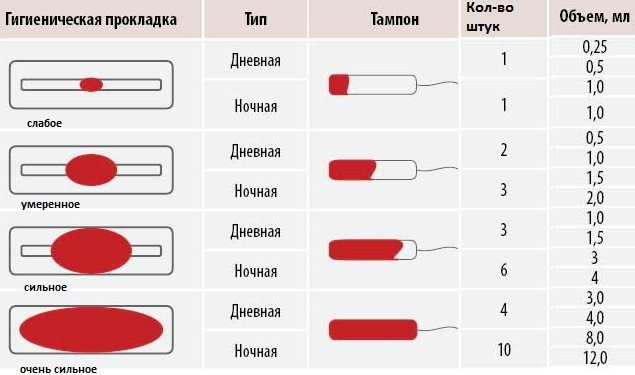
Usually, with blood pathologies, the patient has no symptoms from the reproductive system, but often in history of other complications in the form of thrombophlebitis, varicose veins, increased arterial pressure.
Congenital malformations of the organs of the reproductive system
There are abnormalities that a woman may not know about until the first ultrasound examination for various indications. For example, curvature of the uterus is considered a common congenital abnormality, which is characterized by an abnormal position of the organ.
In this case, there is a violation of the process of removing blood from the uterus during menstruation. Such a deviation does not manifest itself in any way, does not provoke acute disorders. Women can carry a child on their own, childbirth often takes place naturally.
Despite this, blood is slowly excreted during menstruation, which can lead to clot formation. Such a deviation does not require treatment, and usually does not provoke complications.
The use of intrauterine contraceptives
Often, symptoms occur when using an intrauterine device. Many patients note an increase in the period of blood flow and a decrease in the intervals between them.
After refusal to use the device, the symptoms usually disappear, so special treatment is not required. Therapy is usually prescribed when a woman develops concomitant symptoms in the form of pain, weakness, and inflammation.
Hormonal Disorders
Blood clots in a woman can appear during menstruation, when hormonal disorders of varying severity are present in the anamnesis. In this case, an increase in the amount of hormones that provoke increased blood clotting is possible.
Usually, there are no acute symptoms for such violations, but women can talk about headaches, menstrual irregularities and other abnormalities. To eliminate the manifestations in this case, the normalization of the hormonal background with special medications is required.
Reproductive system pathologies
Certain medical conditions can lead to large numbers of large clots. For example, this is often observed when diagnosing endometritis. This condition is accompanied by inflammation of the inner layer of the uterus and the appearance of concomitant symptoms in the form of weakness, fever, headache.
In endometriosis, clots may also be present. The condition is characterized by the proliferation of tissues of the inner layer of the uterus in atypical places for this. Often, foci are found on the ovaries or in the abdominal cavity.
Long stay in one position
Many patients spend a lot of time sitting every day, which is associated with professional activities. After assuming an upright position, blood coagulated in the uterus is released. This should not be a cause for concern.
After a night's sleep, clots may also exit, which is not considered a deviation if there are no accompanying symptoms.
Complications after manipulations on the pelvic organs
After carrying out diagnostic curettage or artificial termination of pregnancy, clots may appear, which is considered a natural reaction of the body to the intervention. If the condition is not accompanied by other disorders, special treatment is not required.
Recovery period after childbirth
Quite often, after giving birth, a woman has a disrupted menstrual cycle, and during bleeding, a large number of clots are released. This is due to the restoration of the inner layer of the uterus.
In the absence of other abnormalities, the condition does not require any treatment. However, with the appearance of severe pain, other changes, a visit to a doctor is required for the purpose of a diagnostic examination.
Menopause
In women during menopause, clots appear often, it speaks of hormonal changes. In this condition, patients often talk about disorders of the nervous and cardiovascular systems, as well as other disorders.
Using hormonal medications as replacement therapy usually helps prevent worsening of symptoms and an increase in the number of clots.
The presence of polyps in the uterus
Blood clots during menstruation may indicate the presence of polyps in the uterus. Polyposis develops quite often as a result of endocrine and hormonal disorders.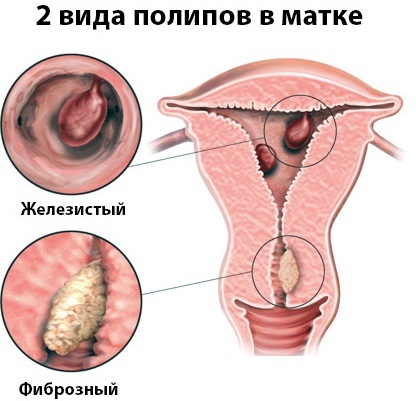
The appearance of clots may indicate an aggravation of symptoms. Additionally, a woman may experience pain in the lower abdomen.
Other reasons
There are other factors that trigger the symptom. In each case, he can enter the result of one or more reasons.
The main factors are:
- Infectious pathologies of the reproductive system.
- Ectopic pregnancy.
- Increased physical activity.
- The use of drugs to normalize the menstrual cycle.
- Excess B vitamins in the body.
- Obesity of varying severity.
- Thyroid pathology.
- Diabetes.
- Stress Disorders.
- Spasm of the muscular layer of the uterus.
Experts draw the attention of patients that in adolescents, after the onset of the first menstruation, such complications are not so often present.
Diagnostics
Despite the fact that the symptom is not always a sign of any disease, the patient is advised to see a doctor. He will prescribe a special examination to determine the predisposing factor.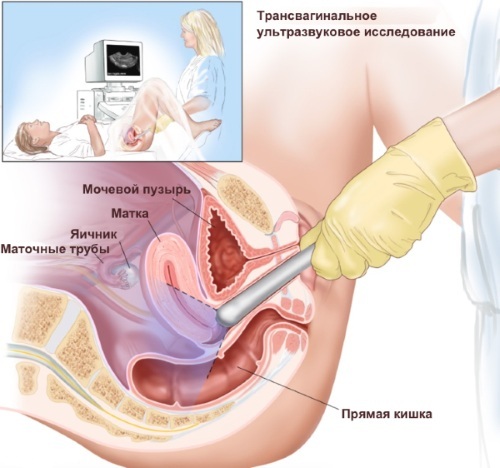
| Method | Description | Venue and cost |
| General survey and inspection | The first and most important diagnostic step is to determine the main symptoms or their absence. The specialist listens to complaints, which helps to draw up a further diagnostic plan | It is carried out in each clinic for free. |
| Clinical and biochemical blood test | The standard diagnostic method, which involves the study of blood taken from the patient's vein. Based on the data obtained, the doctor determines the general condition of the woman, possible deviations from the internal organs | It is carried out in every clinic. In a private institution, the cost can be 500-700 rubles. |
| Blood test to determine hormone levels | An additional research method that is used for patients during menopause, as well as with a history of hormonal disorders | It is usually carried out in private laboratories, the cost is 1000-3000 rubles. depending on the scope of diagnostics |
| Ultrasound diagnostics | An important and most effective diagnostic method, in which a specialist examines the pelvic organs with the help of special equipment. If necessary, the doctor examines the thyroid gland, abdominal organs in order to get a complete picture of the patient's condition | The diagnostic price is approximately 500-900 rubles. Research is being carried out in clinics with special equipment |
| Biopsy | A diagnostic method in which a part of the uterus tissue is taken from the patient with the help of special devices for examination. This is necessary in the presence of neoplasms or polyps. | It is carried out in different clinics, the average price is approximately 1200-1600 rubles. |
Based on the diagnostic data, the patient is prescribed special treatment.
Treatment methods
Menstruating blood clots are not always considered a sign of a medical condition. However, if abnormalities are detected, the specialist prescribes therapy for the patient, depending on the root cause of the disorder.
There is no standard scheme that would apply to every woman. During therapy, drugs from different groups can be prescribed, taking into account the origin of the disorder.
Medications
Prescribing drugs should only be carried out by a doctor. After the examination, the specialist selects the most suitable means. Usually vitamins, hormonal agents, and some blood thinners are prescribed.
The most effective remedies:
-
Tocopherol acetate it is prescribed in the form of capsules for oral administration. The remedy is vitamin E, which is considered the most important for maintaining the health of a woman's reproductive system. The drug is taken within a month at 100 mg per day. It helps to normalize the menstrual cycle, improves the condition of the pelvic organs, prevents the development of complications, and stimulates the production of hormones.
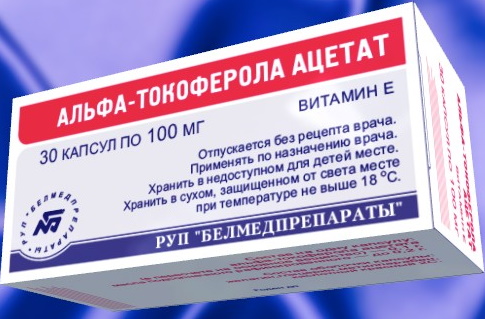
- Folic acid It is also considered an important drug for improving the condition of the pelvic organs. The tool can be used as part of a complex treatment or as the main method of therapy. The daily dosage is 1-2 tablets, depending on the patient's condition and the presence of concomitant deviations. Take the remedy for 2-4 weeks.
- Aspirin Cardio assigned to women who have a history of blood pathology, accompanied by increased blood clotting. The drug is taken at 50 mg per day for 2 weeks. During treatment, monitoring of blood counts is required, with a decrease in the number of platelets and coagulation factors, it is worth stopping therapy.
- No-shpa it is prescribed for patients who suffer from pain in the lower abdomen as a result of spasm of the muscular layer of the uterus. The drug is taken in short courses when symptoms occur, a single dosage is 2 tablets. The agent is taken 2 times per day. Usually, therapy lasts no more than 5 days and is combined with other drugs to increase effectiveness.
- Klimadinon indicated for patients during menopause in order to treat various symptoms of this condition. Tablets are taken 1 piece 2 times a day for a month. The drug helps to normalize the hormonal background, it contains a herbal ingredient, which in its action resembles estrogen produced in a woman's body. This reduces the risk of complications developing when using synthetic ingredients.
- Amoxicillin indicated in the case when clots appear as a result of an inflammatory process in the uterus. The tablets help suppress inflammation, improve the patient's condition, and prevent the spread of pathology to other pelvic organs. Take the agent 500 mg 2 times a day for 10 days. If necessary, the daily rate is doubled.
- Troxevasin indicated for patients suffering from varicose veins, thrombophlebitis. Capsules are taken in courses of 2 weeks. The daily dosage is 2-3 capsules, taken 2-3 times at approximately equal intervals. The drug improves the condition of blood vessels, prevents their damage, slightly thinns the blood, which has a positive effect on the patient's condition.
-
Dicinon indicated for heavy bleeding, if the patient does not have increased coagulability. The tool helps to reduce the amount of blood, prevents the development of complications against the background of profuse blood loss. Usually it is used in a hospital, injected intramuscularly 2 ml 3 times a day. The treatment lasts 3 to 7 days.
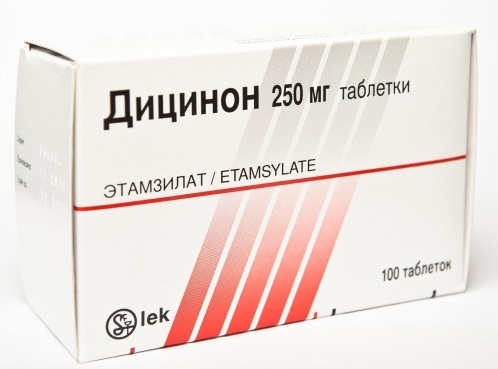
- Reosorbilact used for heavy bleeding against the background of various factors in order to replenish the volume of circulating blood and remove harmful components from the body. The solution is administered intravenously using a dropper, 200 ml per day for 7-10 days.
The use of medications must be agreed with the doctor. In each case, different remedies may be required depending on the accompanying symptoms.
Folk remedies
Traditional medicine recipes can be used as part of a comprehensive treatment. They do not help to completely eliminate the manifestation, but they somewhat alleviate the condition and prevent complications.
A decoction of nettle somewhat reduces the amount of blood secreted and helps to improve the functioning of the pelvic organs. The medicine can be prepared from 10 g of dry raw materials and 1 liter of water.
The product should be cooked for 3 minutes, after which it is insisted for 2 hours. Take the finished filtered product 50 ml 2 times a day. The duration of therapy depends on the severity of the condition, usually 5-7 days are enough to obtain a pronounced result.
Borovaya uterus is considered the best way to normalize the state of the reproductive system in women. To obtain an infusion based on a plant, it is necessary to pour 5 g of raw materials with 300 ml of boiling water. Reception is carried out after infusion for 1 hour. The daily dosage is 150 ml, it can be taken 2-3 times during the day. The therapy lasts up to 10 days.
Chamomile infusion is taken when clots occur against a background of inflammation. You can prepare the product from 5 g of dry raw materials and 200 ml of boiling water. The infusion time of the homemade composition is 20 minutes. Take it from 1-2 times a day, 200 ml. The therapy is continued for no more than 7 days in a row.
Patients should take into account that such treatment does not help to completely eliminate the manifestations if they are caused by any diseases of the internal organs or the reproductive system. Any remedy can be taken only after consulting a specialist, since home formulations can provoke complications and have contraindications.
Other methods
Blood clots during menstruation can indicate a serious complication. For example, with the threat of miscarriage or premature birth, as well as in the case of complications after childbirth, such a manifestation is often observed.
That is why additional methods of therapy can be used in the form of surgery. With profuse bleeding with clots in the early stages of pregnancy and the inability to stop the blood by various methods, specialists perform the procedure for scraping the uterine cavity.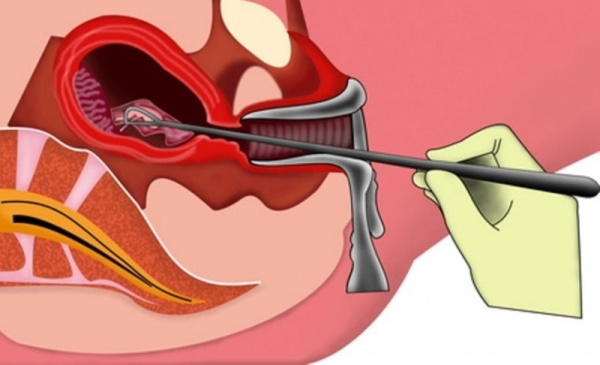
This allows not only to stop bleeding, but also to prevent the development of complications against the background of profuse blood loss.
The operation is performed under general anesthesia in a gynecological department. After manipulation, the patient is under observation for 5-14 days.
The length of stay in the hospital depends on how the manipulation went, as well as the patient's condition before it was carried out. During the recovery period, the patient takes antibacterial medicines, vitamin complexes and other means, depending on the accompanying deviations.
If clots appear against the background of polyposis, it is possible to perform manipulations to remove polyps in the uterine cavity. It involves the instrumental removal of polyps, which can be performed under general anesthesia in the absence of contraindications. Usually, the recovery period after such manipulation is more than 7 days, but in each case, changes are possible.
Carrying out a surgical intervention requires a preliminary thorough examination by a specialist and identifying the degree of neglect of the condition.
Possible consequences and complications
If the clots appear in small numbers, and the patients have no other symptoms, treatment is not required, complications do not arise. However, with a pathological origin of the condition, complications can occur in the absence of treatment.
The most common ones are:
- Progression of hormonal disorders and pathologies of infectious origin.
- The development of anemia against the background of profuse bleeding.
- Aggravation of the condition, the formation of blood clots in some blood pathologies.
- Great weakness and dizziness.
- Decreased performance.
- Hypotension.
- Exhaustion.
Only in some cases does the condition provoke death, if, for example, the patient has a threat of miscarriage or bleeding occurs in the postpartum period. To prevent complications, it is worth visiting a doctor in a timely manner, who will prescribe the correct treatment.
Blood clots can appear in women of different ages during menstruation. The symptom does not always occur against the background of any disease, but this is not considered a reason for refusing to visit a doctor or self-medication. Only a specialist during the examination can determine the cause and eliminate it using various methods.
Video about the causes of clots
Clots during menstruation:



